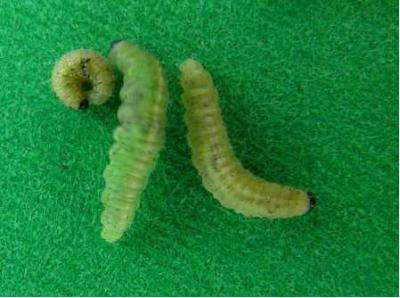Be on the Lookout for the Alfalfa Weevil
This recent addition to Manitoba can significantly reduce alfalfa yields and quality. Alfalfa weevil is found throughout Manitoba, and due to this year’s cool spring, more cases of larval feeding have been reported, many above the economic threshold. All hay and seed fields should be swept for population levels.
The larval stage is the most important as it causes the most damage. The larvae will eat the tender leaf from between the veins which gives the plant a skeletonized, grayish look; they will also feed on the tender flower buds as they emerge. Feeding can start in May and is most pronounced in June; however we are seeing some later feeding due to the cooler spring.
Most people recognize a problem when patches of the field fail to bloom or the plants start to take on a grayish color in appearance. The larvae mainly feed on the first harvest, however, if populations are high they can quickly damage regrowth resulting in yield and stand losses in the second harvest as well. Alfalfa varieties known to provide quick regrowth can be especially susceptible to further damage.
Considering that most of this year’s population is currently in the larval stage, now is the time to scout for severity in your field. The larvae are 3/8 inch, pale green with a white stripe down the back and a black head; however, they may be light yellow when they hatch. The following image shows some alfalfa weevil larvae.

For most forage producers, the best control will be to harvest the crop as soon as feeding damage appears. The process of harvesting kills many of the adults and larvae. For optimum yields, try to wait until bud or early bloom if possible. If the plants do not begin to show signs of regrowth within a week after cutting, then careful examination of the stubble, soil and leaf litter for larvae and adults is necessary. While insecticide spraying is an option, it is costly and damaging to many beneficial insect including the honey bee, but may be necessary to save the stand.
